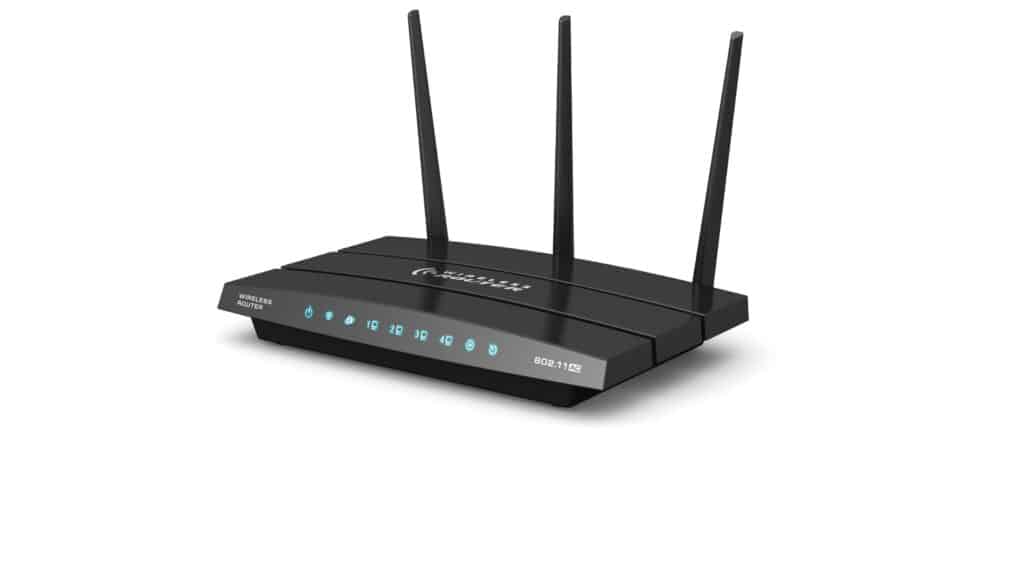- MON - SAT : 9AM - 7PM
- Thane & Pune
- sales@technoeyenet.com
Wireless Router Features You Should Know
If you think a wireless router’s only job is to connect you to the world of the Internet, you’re missing out on a lot of its awesome goodness. Sure, maybe all you need is Internet access. In that case, you don’t really have to worry about all the tricks your router can do. But for those of you that want to maximize your experience, there are some advanced features that will make your life much easier.
If you think a wireless router’s only job is to connect you to the world of the Internet, you’re missing out on a lot of its awesome goodness. Sure, maybe all you need is Internet access. In that case, you don’t really have to worry about all the tricks your router can do. But for those of you that want to maximize your experience, there are some advanced wireless router features that will make your life much easier.
Logging into your router’s administration panel can be daunting. Some panels, like my own Linksys router, are relatively simple and clean. Others, like the open-source powerhouse known as DD-WRT, can be nothing short of overwhelming. There are just so many pages and options–and fiddling with the wrong one can leave you stranded without Internet.
In this article, I’m going to walk you through some of the most common yet useful features available in most routers these days. These features are safe to play around with as long as you exercise caution. But I must say that if you happen to render your router useless, Make use of does not claim any responsibility. Be careful and be smart!
Security Encryption
Wireless security is the most important feature you could have. It almost seems like common sense–so much so that it probably doesn’t require much attention given that. However, for the wireless neophytes reading this, you should know that not all encryption was made equal.
Digging through your router settings, you’ve probably encountered a wireless security setting that let you choose between WEP, WPA, and WPA-2. WEP is the weakest of them all while WPA-2 is the strongest, but WPA-2 is slower and more resource intensive than WPA. Play around with WPA or WPA-2 on your network to see which one works best. For most homes, WPA-2 is the way to go.
Always keep tabs on your wireless router’s security. You wouldn’t want someone to hijack it, nor would you want strangers leeching your bandwidth or performing illegal activities by means of your network.

Filtering by MAC Address
Every device that can be networked in some way will have a unique identifier known as a MAC address (Media Access Control address). Your computers, your iPhones, your Xboxes and Playstation 3s–anything that can connect to the Internet will have a unique MAC address.
MAC filtering, then, is a feature that allows you to allow and deny specific devices from connecting to your router. Some routers let you allow/deny MAC addresses on an individual basis, while older firmware only lets you set a list of MAC addresses that are all allowed or all denied.
If you want maximum security, you should only allow your own MAC addresses to access the router, but this can be an inconvenience when friends and relatives want access to the Internet. Instead, if you only want to ban a certain someone, then the deny feature is what you’ll want.

Port Forwarding
The way the Internet works, every piece of data that travels through the Internet has a destination IP address and a particular port. This port is what differentiates, say, an instant message data packet from a World of Warcraft data packet. Both have the same destination IP (same computer) but different ports (different programs).
When you use a router, the IP address of that router is the one being broadcast to the Internet. Therefore, when you receive data packets, they’re arriving at the router, which must then forward that data packet to a specific device. Routers are usually smart enough to do this on their own, but certain situations require ports to be forwarded manually.
Programs that utilize uncommon port ranges (video games are a big culprit here) often require port forwarding. Server hosts also need to forward their ports. Just be aware that if some of your connections are failing, you may need to forward some of your router ports to the right device.
Quality of Service & Wi-Fi Multimedia
Throughout your time on the Internet, your router will be bombarded with hundreds of different types of data, including: instant messages, video streams, websites, torrents, software updates, video games, and more. When your network activity is at a high point, you may want to prioritize certain data packets over others. That’s what Quality of Service does.
With Quality of Service, you can grant greater bandwidth priority to, say, World of Warcraft packets over instant messenger packets. What does this mean? Well, if your router has a bunch of packets waiting to be sorted and sent out to the right devices, it will send out all World of Warcraft packets before sending out any instant messenger packets.
Wi-Fi Multimedia is actually a specialized form of Quality of Service that’s much easier to use. The option is either enabled or disabled–and that’s it.
Wi-Fi Multimedia works to improve reliability and performance for all data packets related to multimedia: audio, video, and voice. However, the technology is still pretty new, so there’s no real guarantee that you’ll see extreme improvements. But it’s worth testing if you use a lot of online multimedia and your network seems to be having performance problems.

Guest Access
When your friends come over and ask to use your Internet, do you just hand out your router password to them? If so, you better hope they’re very trustworthy because you’re letting them connect directly to the router and to all other devices connected to that router as well. There is a safer and easier alternative that doesn’t require you to give away your main router password.
Guest Access is a feature that lets users connect to your router in a guest capacity. Guest users gain Internet access but not access to other devices on the network, thus improving your security just a bit.
Factory Defaults
The last feature is one that I’ve used on numerous occasions: reset to factory default settings. As a tinkerer, I like to play around with my devices and routers are no exception. There are times, however, when I’ll mess with the wrong setting and render my router broken or seriously hindered. For those times, the factory reset is invaluable.
As the name implies, resetting to factory defaults will return all of the router firmware to the exact state that it left the factory. Think of it as erasing a slate and starting over fresh. Most routers will return to factory settings when you hold the back button for 15-30 seconds. Consult your router manual for specifics.
Routers are simple devices that can really unlock a lot of potential when utilized properly. These are just some of the great features you’ll find in most, if not all, routers manufactured nowadays. What other awesome wireless router features do you use on a regular basis? Share them with us in the comments!

Services
Solutions
- Data Centre Solutions
- EBPX Intercom
- Video Audio Conferencing
- IT Security Solutions
- Networking Solutions
- Structured Cabling
- Wi-Fi Solutions
- Server & Backup Solutions
- CCTV Surveillance System
- Biometric Attendance Machine
- Door Access Solutions
- Video Door Phone
- Internet Lease Line
- PRI & MPLS
- Webserver & Storage Solutions
Connect With Us
- +91-9503357739
- sales@technoeyenet.com
-
Kapurwadi
SB27, Second Floor, High Street Mall, Kapurbawadi Junction, Thane(W)-Pincode 400607 -
Pune
BR1- 412/413, 4th floor, B Wing, Jai Ganesh Vision Complex, Akurdi, Pune, Maharashtra 411035 -
Bhiwandi
202, I-Wing, Manav Complex, Reti Bandar Rd, Phase II, Kalher, Bhiwandi, Maharashtra 421302 -
Tingre Nagar, Pune
No: 7, Ground Floor, Samvidh Society, Plot No: 29, Landmark 7B,, Vidya Nagar Road, Tingre Nagar., Pune, Maharashtra 411032